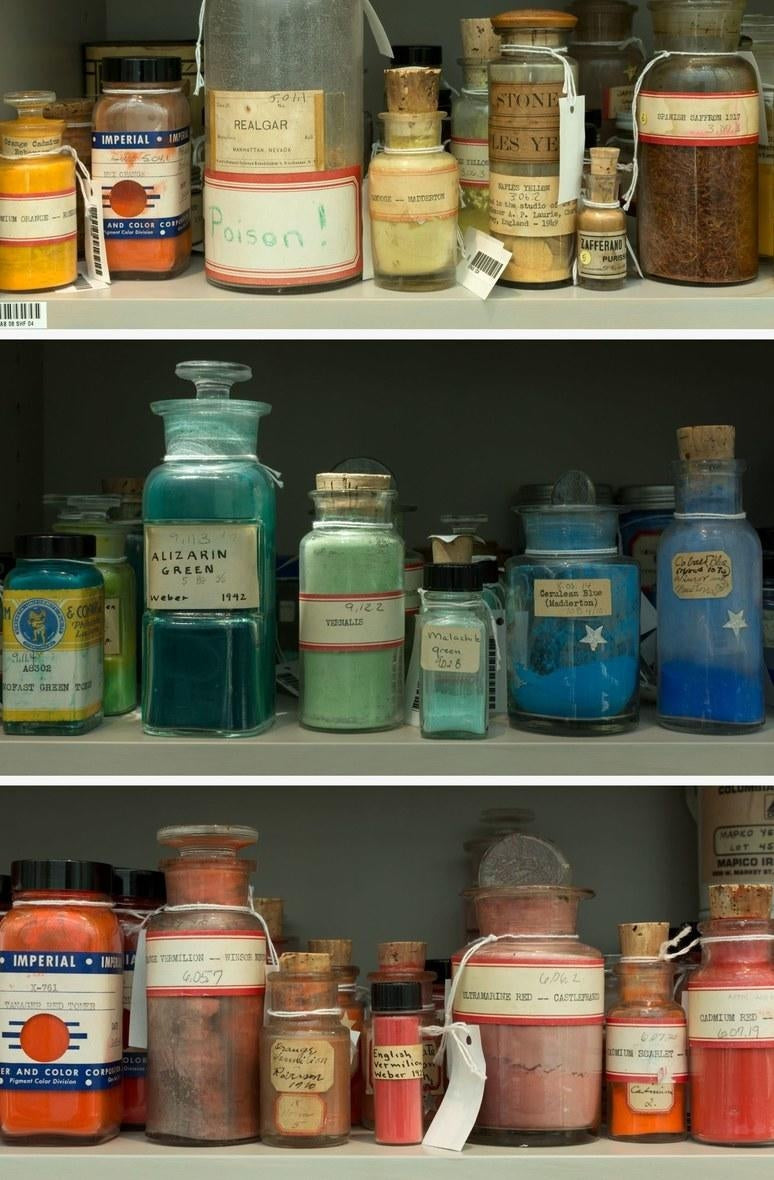Before the world had ready-made paints and art supplies stores, we had Colormen!
These professionals were the “traders” of the paint world starting in the late 17th century and sold artists prepared pigments, pre-mixed oil paints, watercolors, dyes, made brushes, prepped canvases, gums, resins, and more. Before Colormen, the painter would buy course, raw pigments from apothecaries’ shops (or source them directly from quarries) and grind them into a powder themselves. Either the artist or, if they were wealthy, their apprentice would grind, sift and sieve and mix the pigment with walnut or linseed oil to make oil paint. With the arrival of Colormen, artists were finally liberated from the difficult task of sourcing, manufacturing, grinding and testing all of their pigments, dyes, surfaces and supplies.

When the colormen began selling pre-mixed oil paint, they would sell about 1 oz. of each color tied up in a small piece of cleaned pig bladder. It was about the size of a walnut, a small amount, because more than that would dry up. The artist would pierce the bladder with a pin and squeeze it out onto the palette. They would return to the colormen in 1-2 weeks for more paints. The metal paint tubes that we use today weren't invented until 1834.

Prepared watercolor paints weren't created until 100 years after prepared oil paints. After several decades of development, selling watercolor paints in clam shells, discovering how to creates "cakes", and then finally discovering that adding honey keeps the paints semi-moist and easy to use, watercolors became a very popular medium.
These watercolors were sold in square block "cakes" and also in ready-made art boxes prepared by the Colormen. The deluxe boxes were made out of mahogany, and filled with brass hardware, leather linings, equipped with mixing pans, wash bowls, storage tins for chalks or charcoal, trays for their brushes, crayons, scrapers, ink, and paints. These became very popular and were sold all over the world throughout the growing British Empire. Eventually, the colormen set up permanent shops and these gradually evolved into the modern day art supplies stores that we know today.

Colormen were the first to sell “hues” or mixed colors. This revolution allowed them to increase the amount of paint colors that they sold my mixing pigments together to create new ones. The Colormen definitely provided some much-desired convenience for artists, but that convenience sometimes came at a cost. Many professional painters of the time continued to prepare their own pigments, because of fear of the adulteration of the pigments. Expensive pigments like natural ultramarine (from the semi-precious lapis lazuli stone) and vermilion were often adulterated with cheap additives by dishonest Colormen. When mixing “hues” or new colors, they sometimes chose a different pigment or a combination of pigments than what they advertised because the original pigment was too expensive or not available. Another problem with hues is the degradation of “chroma” when pigments are mixed together, because pigments do not act in mixture like single pigments either in color or tone. And another potential problem with pigment mixtures is the interactivity of some pigments that can lead to degradation and not be archival over time.

This movement of convenience, while allowing the artist more freedom, has unfortunately led to our current practice of buying tubes of pre-mixed paint that have been heavily adulterated with cheap fillers, additives, toxic preservatives, heavy metals, solvents and petroleum-based pigments.
We at Natural Earth Paint are re-discovering the beauty of hand-mixed oil paints with only two ingredients, pigment and oil, to create a 100% non-toxic paint and achieve the purity and luminosity that only comes from filler-free paints.

Interested in learning more about Natural Earth Paint history? Visit our History page!
Follow us on Instagram, Facebook, and Pinterest for more natural inspiration.





